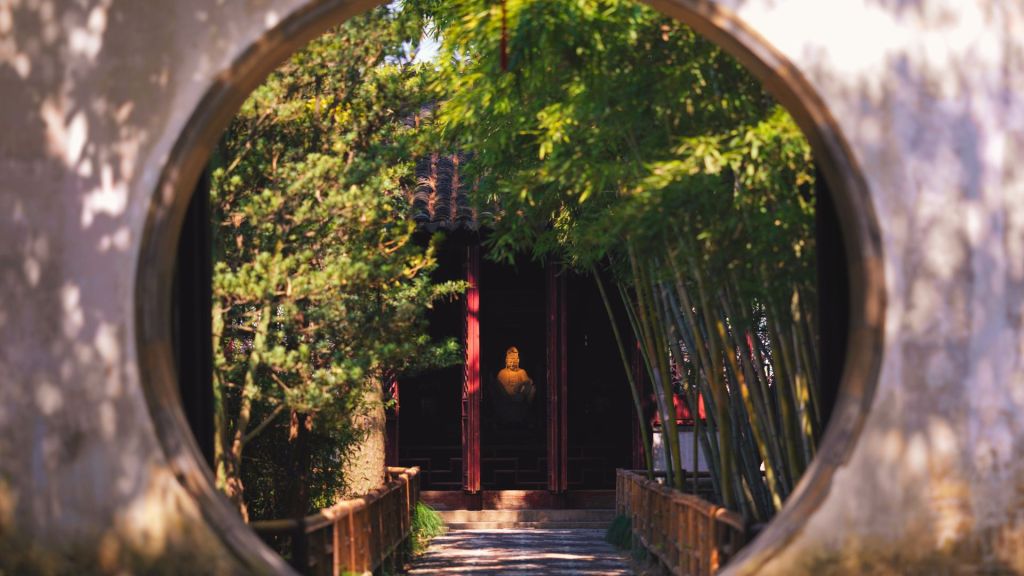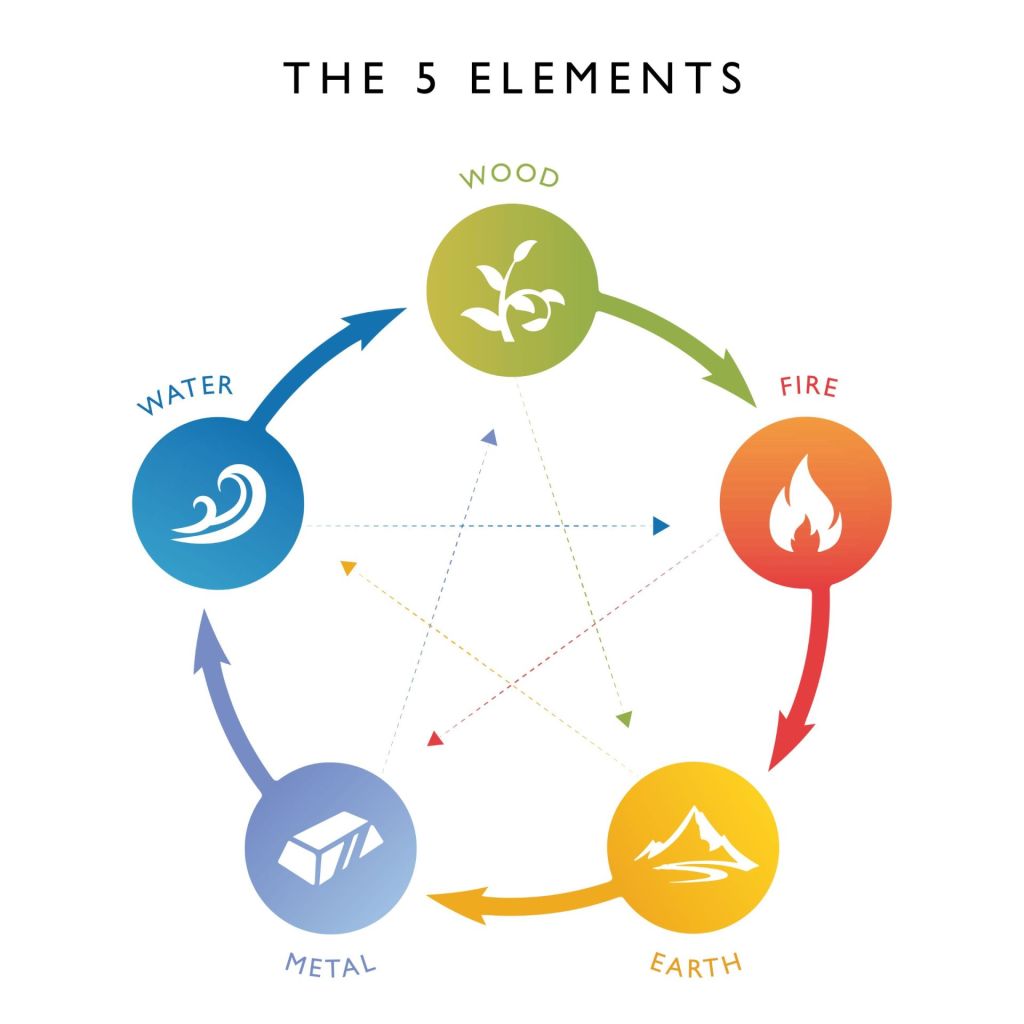Chinese Medicine is based on a highly organised system of knowledge and a language deeply woven into the fabric of Chinese culture and philosophy. For those unfamiliar with Chinese Medicine, many terms might sound confusing or be easily misused and misinterpreted.
This article gathers together an overview of Chinese Medicine’s fundamental theories and principles to equip you with a solid basic understanding to navigate the complex world of Chinese Medicine and bridge the gap between Western and Chinese medicine.

Chinese Medicine: An Ecology of Health
A system in harmony will naturally tend towards health, well-being, and sustainability. Similarly, a system in disharmony will lean towards illness, disease, suffering, and collapse.
Chinese Medicine may have started over 2500 years ago, but has been continuously evolving, developing into the sophisticated system it is today through direct observation, extensive experiential knowledge and modern analytical techniques.
Its empirical approach and all-inclusive perspective stem from a deep understanding of natural laws, coupled with a keen awareness of how everything is interconnected and interrelated as part of a cohesive and synergistic whole.
We are all complex microcosms made up of mind, emotion, consciousness and physical bodies. We are also an integral and interdependent part of the larger ecosystem, subject to and operating by the same laws and forces.
Any change in the ecosystem influences and affects human health and the body-mind system in various meaningful ways. Likewise, human activity, with its ripple effect and growing ecological footprint can impact and alter the environment considerably. As we are increasingly becoming aware, disregarding natural rhythms in favour of artificial ones can disrupt the sustainability of any ecosystem.
Chinese Medicine looks at human health and well-being from this all-encompassing, ‘ecological’ perspective, taking everything into account: from physical symptoms and emotional states to the wider ecosystem of seasons, lifestyles and how we interact with our families, our community and surroundings.
Maintaining or restoring a dynamic and adaptive balance within a continually transforming ecosystem is the primary purpose of Chinese Medicine. Every principle, theory, and therapeutic method in Chinese Medicine aligns with this view and applies natural concepts to identify and address disease or prevent ill health.
This naturalistic approach underpins all of Chinese Medicine’s main theories and principles. The most common principles are:
- Qi
- Yin & Yang
- Five Elements
- Zang Fu
- Syndromes
Defining Qi
The unhindered expression of Qi allows evolution to happen, nature to flourish and the building of healthy, harmonious and sustainable systems. Anything that interferes with or restrains Qi will impact sustainability, flourishing of life and well-being.
Qi is a term that has entered common English usage and yet remains quite impossible to translate into English. It’s been often loosely translated and tentatively described as energy or vital energy and life force, though it carries a much deeper and more complex meaning.
What drives all living things to survive and flourish? Why do we see a will for life to adapt and succeed? Do single-cell organisms choose to strive to become more complex systems of life? Or is there a natural force driving them towards these goals? Why does evolution push us in this direction of flourishing complexity?
Qi is the driving force behind the flourishing of life and evolution. It directs and sustains an intrinsic purpose of all existence, to strive towards life, expansion and more complex states of consciousness.
Qi is an organising and underlying force in the universe. It turns potentiality into actuality, flowing endlessly from one state into another in an effortless process always in the direction of creating and sustaining life.
It manifests itself through the evolving cycles of human life and the natural world. You can witness it in the changing seasons, in the sprouting of seedlings, and in the development of a newborn baby.
Qi is, at present, unmeasurable with machines, leading many to claim that it is a false concept even if its results are in plain view and all around us. We all acknowledge that there is a universal movement towards the evolution of complex systems which lead to the flourishing of life and the birth of consciousness – we just don’t tend to give it a name.
By acknowledging and understanding Qi, Chinese Medicine has developed ways to remove obstructions and invigorate Qi to bring about positive transformation and good health. It may also work on disrupting the Qi of pathogens which invade and harm health.

Yin and Yang: A Theory of Balance and Homeostasis
When Yin and Yang are in harmony, there is health, well-being and sustainability. When Yin and Yang are in disharmony, when there is too much or too little of one aspect, there is illness, pain and suffering.
If Qi brings about constant change and evolution, then “Yin and Yang” facilitates balance within that change.
Chinese Medicine acknowledges that everything in nature is controlled by a system of opposite and interdependent forces, interacting and transforming into one another in harmonious unity.
Yin and Yang describe the mutually opposite and mutually dependent attributes of all phenomena in the natural world. In other words, these opposites define, balance and transform into each other.
Chinese Medicine, just like Western Medicine, seeks to achieve homeostasis. Primarily it achieves this by “restoring” the dynamic equilibrium between Yin and Yang to ensure that there is no deficiency or excess, which would result in disharmony and ill health. Such homeostasis may apply to internal Yin Yang states as well as external lifestyle and living conditions.
Three main aspects define the Yin/Yang relationship:
1. Mutual opposition: they are opposites.
If Yin is immaterial, then Yang is material. If Yin is night, then Yang is day. If Yin is cold, then Yang is hot. The list is endless.
2. Mutual dependence/definition: the two are rooted in each other.
One cannot exist without the other. Night cannot exist or be understood without day; cold cannot exist or be understood without hot.
3. Mutual transformation: they constantly cycle from one side to the other as a natural occurrence.
Anything Yin can become Yang and anything Yang can become Yin. They interact in a dynamic flow to create harmony in the whole. Night and Day transform into each other.
The Five-Element Frame – A Theory of Relationships
Any imbalanced relationship is a weak link in the chain and, if not addressed, might undermine the whole system’s strength.
The Wu Xing, the ‘Five Phases of Transformation’, or the ‘Five Elements’ is a theory of relationships developed from observing nature. Chinese Medicine uses Five Elements pragmatically to understand and influence imbalances and improve health.
Five Element theory is used as a guide to regaining homeostasis by mimicking and applying natural law to affect change within a system. It provides the physician with a multi-dimensional view anchored in our undeniable bond with nature.
Five Element Theory was developed to group related phenomena and systematise how these groups interact with each other in nature. Named after 5 elements (Wood, Fire, Earth, Metal, Water), they should not, however, be regarded as literal, inert substances. Instead, they should be viewed as individual groups defined by unique characteristics and seemingly limitless correlations, including seasons, directions, weather, emotions and internal organs, among many others.
Wood: growth, rise, smoothening and clearing
Fire: heating, rising
Earth: support, assimilate, accept
Metal: clean, subdue, convergence
Water: cold, moisturize, downwards
The Five Elements interact with each other in a relationship of mutual generation and control. The Five Element relationships have three mechanisms – Generating, Reducing and Controlling

The Generating cycle means that one element creates or nourishes the following one in a parent-child relationship.
In reverse, the Reducing cycle means that the ‘child’ element reduces the strength of the previous ‘parent’ element.
In the Controlling cycle, the Grandparent controls and influences the activity of the Grandchild.
So in the Generating and Reducing cycle, Wood burns to create Fire, Fire brings all that it burns back to Earth, Earth produces ores of Metal, Metal mineralises Water and Water is the source for Wood to grow.
In the Controlling sequence, Fire melts Metal, Metal cuts Wood, Wood parts Earth, Earth holds back Water and Water puts out Fire.
This set of relationships is in endless motion and creates a self-regulating system of checks and balances designed to ensure that one element will not over-dominate another element for any lengthy period.
If one or more of the elements diminishes or exacerbates due to various reasons (including external interference), it disturbs the balance and affects the whole system. The stronger the disturbance, the more wide-spread the problems are and further subdues the system’s ability to self-regulate.
Chinese Medicine uses this theory of relationships to inform a strategy to treat illness. Symptoms may reveal that one element is weak, and the doctor may focus on treating the ‘parent’ of that element to bring about nourishment. If one element is overactive then the doctor may choose to strengthen the controlling element.
Similarly, the view of disease can be viewed through the lens of Five Element theory. The Cause is the parent, the symptom is the child and the prognosis is the grandchild. Again, the doctor is pragmatically using relationships in nature to understand and treat illness.
Zang-Fu Organs: A System of Structures and Functions
Zang-Fu Organs or viscera are among Chinese Medicine’s most confusing and difficult concepts to grasp for those unfamiliar with Chinese culture and philosophy. The confusion arises, partly from language.
Zang-Fu Organs are named after anatomical organs (Heart, Lungs, Liver etc) but they do not refer to these anatomical structures alone.
Instead, they are broader concepts that encompass groups of functions in the body. For example, the Zang Fu Heart is a group of functions that includes the circulation of blood but also the sharpness of the mind. The Zang Fu Spleen has the role of transforming food and transporting nutrition.
These complex and interrelated systems of functions are grouped under umbrella terms and classified into five Zang‐viscera (the heart, lungs, kidneys, liver, and spleen), six Fu‐viscera (the stomach, gallbladder, large intestine, small intestine, urinary bladder, and the san jiao or the triple energizer), and Extraordinary organs. They all have been assigned Yin Yang pairs and grouped into the Five Element Theory.
The Zang Fu Organs are the primary targets for Chinese Medicine. Treatment aims to nourish and restore the proper functions of the Zang Fu Organs to bring them back into balance, which is the foundation for good health. Different medicines and combinations have different affinities and can affect the Zang Fu organs in various manners.
Syndromes: A Collection of Signs And Symptoms
Syndromes (Zheng) are an essential component of Chinese Medicine theory as they guide practitioners in formulating a diagnosis and finding the appropriate treatment strategy. They have been devised through a sophisticated system of observation that relies on centuries of experiential knowledge.
Syndromes describe classically observed patterns of disharmony which result in a predictable variety of symptoms and observable signs.
If Five Elements is the grouping and relationships of natural phenomena and Zang Fu are the groupings and relationships of functions of the body, then Syndromes are the grouping and relationships of symptoms into familiar patterns of illness.
Someone complaining of a headache could be suffering from all manner of Syndromes. By learning about all other, seemingly unrelated, symptoms (physical, emotional or mental), the doctor can diagnose the Syndrome(s) at play to formulate a treatment strategy. By treating the Syndrome the correlated symptoms should resolve.
Signs and symptoms are gathered through the diagnostic methods of observation, listening, questioning, and tongue and pulse analysis. All of this information leads to a diagnosis of the syndromes which the client is experiencing.
In Western medicine, the purpose of consultation is to diagnose a specific condition. Chinese Medicine views this approach as excessively narrow. There may be multiple symptoms and a variety of conditions affecting many aspects of a person’s life. By over-specialising and trying to reduce the diagnosis to detailed medical conditions, there is the risk of missing the ‘whole’ and sending the client to different specialists providing disparate and fragmented treatments.
In Chinese Medicine, the medical conditions are not as important as the underlying Syndromes which have led to those conditions. By treating Syndromes, Chinese Medicine seeks to find a more unified, root-centred and long-term treatment strategy.

Let’s put all of this together – A Garden To Be Tended
Let’s try to bring all of these theories together as an analogy. Imagine that your health is reflected in the health and sustainability of a garden and that the Chinese Medicine doctor is the gardener.
Qi is the innate drive of the garden to flourish and expand into a diverse ecosystem with more complex forms and systems. It is the force of change and evolution towards survival and growth, no matter the conditions.
Yin and Yang define the different elemental aspects at play – day and night, wet and dry, cold and hot.
The Five Elements are the relationships of groups of natural phenomena (plants, soil, water etc) in the garden. These relationships facilitate the creation and stability of the ecosystem.
The Zang Fu organs are broad groups of functions in the garden such as reproduction, growth and irrigation.
A good gardener continually observes these relationships, cycles, and groups to understand how the whole system works and balances itself.
Now imagine that the gardener notices that the garden is not fruiting as abundantly one year.
From years of experience, the gardener knows that a lack of fruits could come from many causes so the gardener seeks out other information. The gardener notices that the leaves of the tree lack vibrancy and have curled edges and the pond at the end of the garden is murky. When grouped together these ‘symptoms’ have historically come from the same cause. This is the Syndrome from which the garden is suffering.
The Syndrome defines which Zang Fu Organs to treat – in this case, the soil is waterlogged due to recent excessive rain and the group of functions related to irrigation need to be helped.
By understanding the Five Elements and knowing how the garden would naturally resolve this problem, the gardener helps the natural process by laying down thick layers of organic soil, which attracts worms to dig down and mix the light soil with the waterlogged earth to improve irrigation.
It takes time but the pond starts to clear, and the fruits start to grow and the gardener need not interfere any further.
This garden is a simple analogy to show that Chinese Medicine views the person as a complex psycho-emotional and physical ecosystem continuously being affected by external and internal factors. Health is the ability to sustain that ecosystem and the best long-term medicine facilitates natural processes rather than interventions, to allow the innate forces of life to flourish.
Whenever you visit a properly trained Chinese Medicine doctor, your health and the resulting treatment will be defined by these naturalistic principles of sustainability and minimal intervention. The result is a deep and long term improvement of your health.

